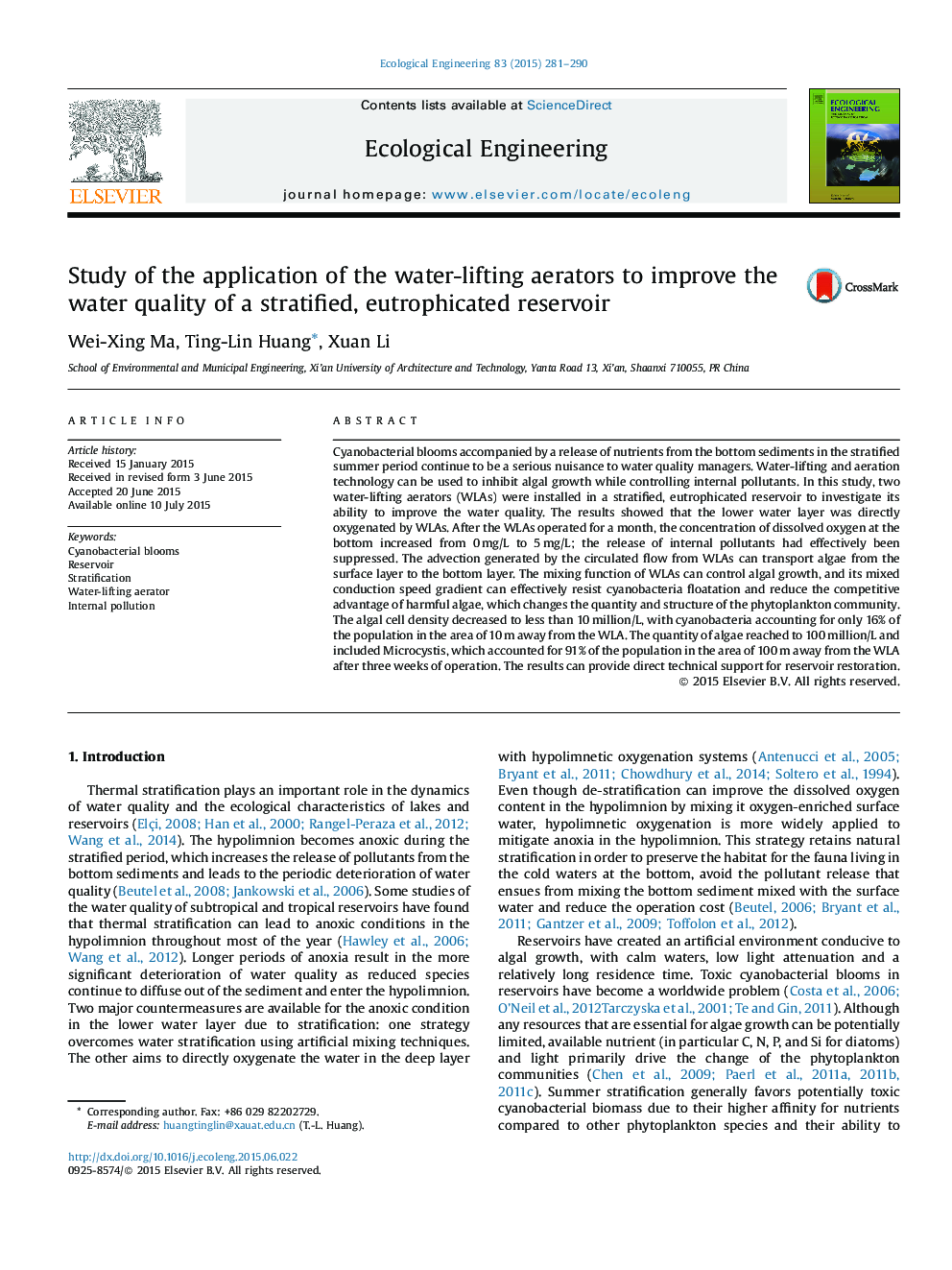| Article ID | Journal | Published Year | Pages | File Type |
|---|---|---|---|---|
| 4388877 | Ecological Engineering | 2015 | 10 Pages |
•Water-lifting aerators were employed successfully for water quality improvement.•Oxygenate the lower-layer water thus inhibit the release of internal pollutants.•The operation of the WLA can inhibit algal growth and change its composition.•The operation of the WLA can accelerate organic matter degradation.
Cyanobacterial blooms accompanied by a release of nutrients from the bottom sediments in the stratified summer period continue to be a serious nuisance to water quality managers. Water-lifting and aeration technology can be used to inhibit algal growth while controlling internal pollutants. In this study, two water-lifting aerators (WLAs) were installed in a stratified, eutrophicated reservoir to investigate its ability to improve the water quality. The results showed that the lower water layer was directly oxygenated by WLAs. After the WLAs operated for a month, the concentration of dissolved oxygen at the bottom increased from 0 mg/L to 5 mg/L; the release of internal pollutants had effectively been suppressed. The advection generated by the circulated flow from WLAs can transport algae from the surface layer to the bottom layer. The mixing function of WLAs can control algal growth, and its mixed conduction speed gradient can effectively resist cyanobacteria floatation and reduce the competitive advantage of harmful algae, which changes the quantity and structure of the phytoplankton community. The algal cell density decreased to less than 10 million/L, with cyanobacteria accounting for only 16% of the population in the area of 10 m away from the WLA. The quantity of algae reached to 100 million/L and included Microcystis, which accounted for 91% of the population in the area of 100 m away from the WLA after three weeks of operation. The results can provide direct technical support for reservoir restoration.
Graphical abstractFigure optionsDownload full-size imageDownload as PowerPoint slide
